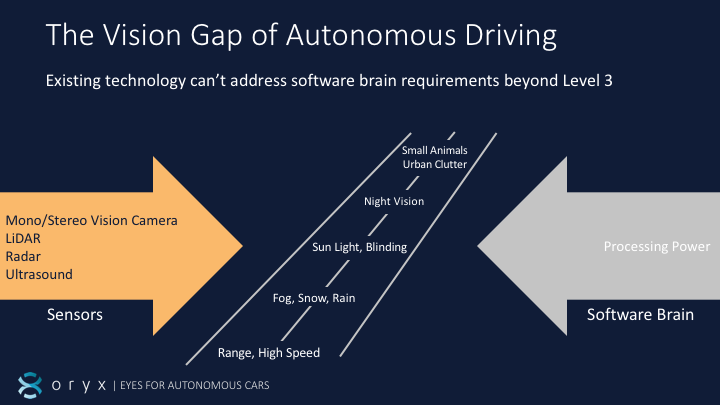Oryx Vision developed a “coherent optical radar system” that improves the depth perception of autonomous vehicles.

CEO Rani Wellington noted that standard lidar detects light with photoelectric sensors, ultimately measuring the energy of the light. Nanoantennas, as the company describes, identify data with an electromagnetic wave, allowing the system to access additional information.
The system advantageously increases range and sensitivity for an autonomous vehicle that is required to know exactly what is surrounding it and what those objects are doing. The Oryx antenna operates at a 10-micron wavelength that can see through fog and not get blinded by bright sunlight as would happen with traditional lidar.
Six years ago, the engineers started working to build a device that could surpass the shortcomings of a lidar system. It took a year and a half to get the prototype to the point where it was usable for imaging.
Oryx noted that its antennas are less expensive compared to the lidar systems currently used in innovative self-driving cars. The cost of the imager that the system uses is the same as the camera in a mobile phone, and the company noted it is using “the cheapest, most boring laser on earth.” Oryx’s system uses simple optics, requiring no steering, no rotating elements, and no optical rays to account for.
The company is targeting manufacturers that are constructing fully autonomous vehicles of the future rather than the advanced driver systems we currently see in modern cars.
“Autonomous driving is about vision and decision, and there’s currently a gap between the two. There must be another technology, another sensor [besides lidar], to close that gap,” Wellington said.
Source: TechCrunch
Advertisement
Learn more about Electronic Products Magazine





